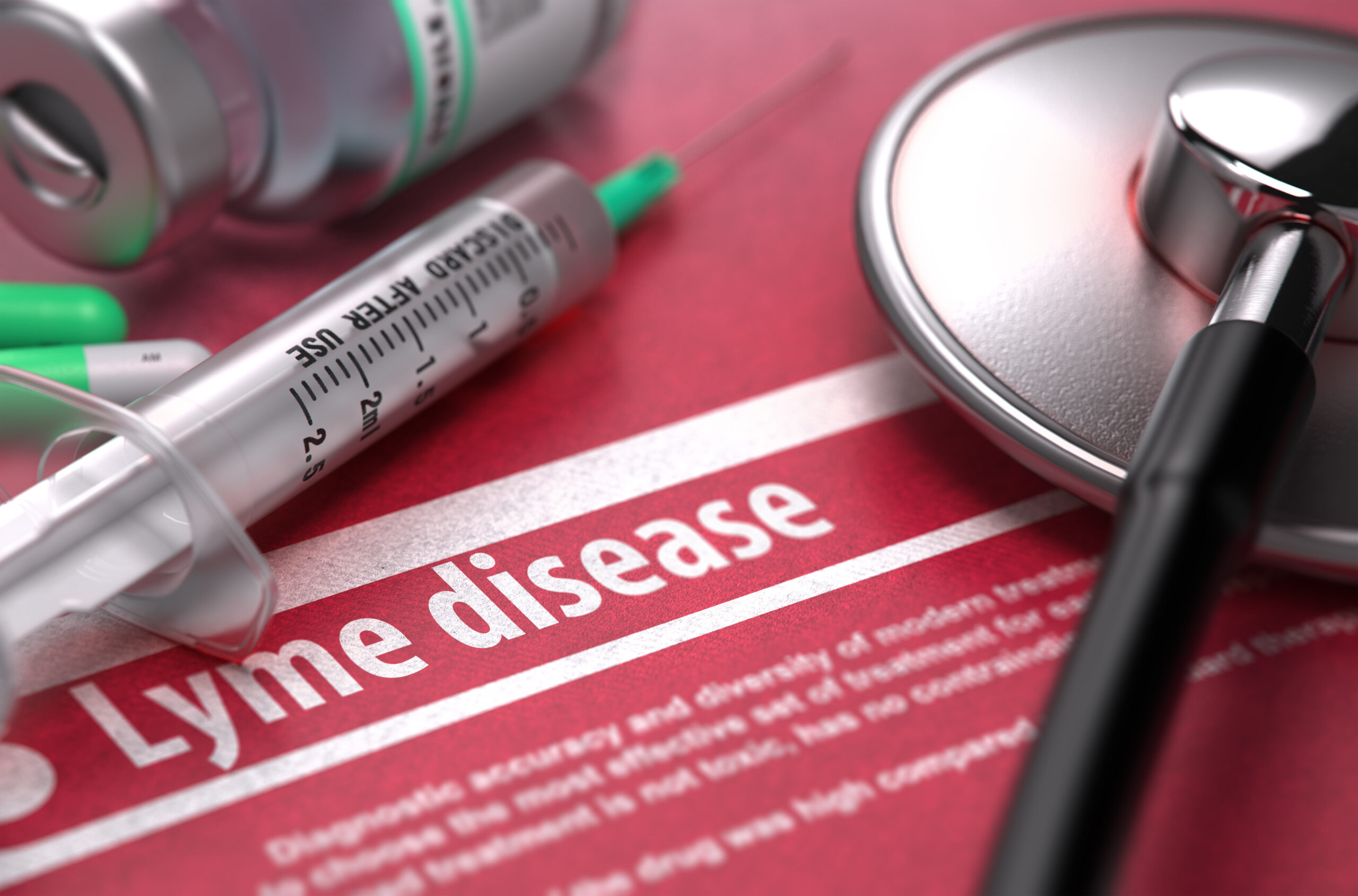Call for your appointment today 914-666-4665 | Mt. Kisco, New York

Scientists are increasingly focusing their attention on identifying tick-borne pathogens present in the Southeastern United States. In 2015, Lantos and colleagues released a paper which reviewed the geographic expansion of Lyme disease in the Southeast over the past 14 years. They found “a marked increase in Lyme disease cases in Virginia, particularly from 2007 onwards … with development of a new disease cluster in the southern Virginia mountain region.”
And since 2009, five counties in North Carolina have been considered endemic for Lyme disease. The introduction of tick-transmitted diseases into new areas is likely to continue. According to the authors, “we may also see expansion into the mountainous areas of neighboring states, such as Kentucky, West Virginia, and Tennessee” in the coming years. [1]
Rudenko and colleagues’ recent study looks at 24 individuals living in the South, who were treated for tick-borne illnesses. Three individuals were from North Carolina, 11 from Georgia and 10 from Florida. Out of the 24 people, 71% recalled a tick bite and 50% had a lesion resembling a tick bite, which ranged in size from a few centimeters in diameter to 9-12 centimeters. [2]
 The authors describe the subjects as “humans who suffered from undefined disorders, had symptoms not typical for Lyme borreliosis, but had undergone antibiotic treatment due to suspicion of having Lyme disease even though they were seronegative.”
The authors describe the subjects as “humans who suffered from undefined disorders, had symptoms not typical for Lyme borreliosis, but had undergone antibiotic treatment due to suspicion of having Lyme disease even though they were seronegative.”
Major symptoms included “severe headache, nausea, muscle and joint pain, numbness and tingling sensations in extremities, neck pain, back pain, panic attacks, depression, dizziness, vision problems, sleep problems, and shortness of breath.” [2]
The researchers successfully cultivated Borrelia burgdorferi and Borrelia bissettii-like spirochete from these individuals. This is the “first recovery of live Borrelia burgdorferi sensu stricto from residents of southeastern United States,” writes Rudenko. “And, the first successful cultivation of live Borrelia bissettii-like strain from a resident of North America.”
A modified Kelly-Pettenkofer medium was used to culture the specimens, rather than a Barbour-Stoenner-Kelly-H (BSK-H) medium. The positive cultures were further characterized by DNA purification, PCR amplification, sequencing, sequence analysis and multilocus sequence analysis (MLSA) followed by transmission electron microscopy.
“This is the first recovery of live Borrelia burgdorferi sensu stricto from residents of southeastern United States,” states Rudenko and colleagues.
Borrelia bissettii has been examined as a cause of Lyme disease by detections of spirochetes in serum samples in Europe, [3] aortic valve tissue of Lyme borreliosis patients in the Czech Republic, [4] and B. bissettii-like DNA detected in north-coastal California. [5]
This strain of Borrelia is widely distributed in ticks and wildlife in North America, including the Southeast. Infection with B. bissettii causes Lyme-like symptoms including flu-like symptoms, arthralgia, weakness, and myalgia. [4]
Rudenko and colleagues concede that typically his subjects would not have been studied because:
- Southeastern U.S. is not considered endemic for Lyme disease by the CDC
- Patients were negative by the current CDC surveillance definition
- They had been treated for an extended time with antibiotics
- The study was retrospective
- Patients could have been re-infected
The recovery of Borrelia bissettii-like spirochetes from individuals in the Southeast highlights the need for further study of tick-borne pathogens in that region. Furthermore, culturing live Borrelia burgdorferi sensu stricto and Borrelia bissettii-like bacterium, even after a patient has received extended treatment (some up to 9 months) with doxycycline is concerning.
Sources:
- Lantos PM, Nigrovic LE, Auwaerter PG et al. Geographic Expansion of Lyme Disease in the Southeastern United States, 2000-2014. Open Forum Infect Dis, 2(4), ofv143 (2015).
- Rudenko N, Golovchenko M, Vancova M, Clark K, Grubhoffer L, Oliver JJH. Isolation of live Borrelia burgdorferi sensu lato spirochetes from patients with undefined disorders and symptoms not typical for Lyme borreliosis. Clinical Microbiology and Infection, (2015).
- Rudenko N, Golovchenko M, Mokracek A et al. Detection of Borrelia bissettii in cardiac valve tissue of a patient with endocarditis and aortic valve stenosis in the Czech Republic. J Clin Microbiol, 46(10), 3540-3543 (2008).
- Rudenko N, Golovchenko M, Ruzek D, Piskunova N, Mallatova N, Grubhoffer L. Molecular detection of Borrelia bissettii DNA in serum samples from patients in the Czech Republic with suspected borreliosis. FEMS Microbiol Lett, 292(2), 274-281 (2009).
- Girard YA, Fedorova N, Lane RS. Genetic diversity of Borrelia burgdorferi and detection of B. bissettii-like DNA in serum of north-coastal California residents. J Clin Microbiol, 49(3), 945-954 (2011).




Dr. Cameron,
I used to see you back in 2013 when I contracted Lyme and Babesia. In 2016 I contacted you because I was to undergo a hysterectomy, which I had 4/22/16. I’ve been sick with all sorts of symptoms, have been recently diagnosed with urinary retention, and a rectocele. I often have the chills. I am wondering if my Lyme and Babesia flared up due to surgery. I also have tailbone pain; had impar ganglion injection for that; it didn’t work too well.
My last test for Lyme was by a pcp and she said that it existed but in small quantity. She did not test for babesia.
What should I do? I feel sickly, nauseated, tired, and have chills all the time (in this warm weather (May 2017).
These doctors don’t understand any of this and shrug it off to depression. Of course I am depressed, who wouldn’t be with all these symptoms. If I can find a friend to take me to see you again, do you think something can be prescribed to help me? Thank you.
We are sorry to hear you are ill. Stress due to illness does not help. It is hard to tell without seeing you if there is anything we can offer. In the meantime, work with your doctors.
I have lived in East Tennessee my entire life. I was misdiagnosed for over a decade until last year when a new rheumatologist who ran a panel of auto immune disease tests. He referred me to an infectious disease Dr who had treated tick born illnesses. I was diagnosed with Neuro Lyme. I have had a picc line for over a year. I have been on iv rocephin daily. The few times I went off the antibiotics, all my symptoms came back with a vengeance. When the official from the Tn department of health spoke with me, he stated that he wasn’t counting my case as an official case of Lyme. When I asked why not, he wouldn’t give me an answer, except we don’t have the white footed mouse in Tn…I am living proof that chronic Lyme disease does exist. It has destroyed my body, my mind, and lively hood. I guarantee if I were tested again, Lyme would still be present.
Janice, I am so sorry to hear this story! Mine is similar. It is sadthat chronic lyme does exist and the CDC does bot want the truth to come out about thus and thats the scariest part, besides you, me and many more have to suffer with this illlness daily! I am curently immobilized from pain and herniated disc from lymes and sever neuro damage. I have done antibiotic treatment for over a year and lots of hebal supplemnets & natural cures and recent blood test show ligher levels than when i originally got diagnosed a little over year ago. I feel for you and hope you get some relief. My prayers are with you. Stefany T.
I also live in east tn. and begote being diagnosed a rheumatologist screwed me up worse with IV steroids and steroid injections. Finally found Dr in NYC, he said my case was so difficult because of the strroids.
Treatment for a tick borne illness has been successful for many despite steroids.